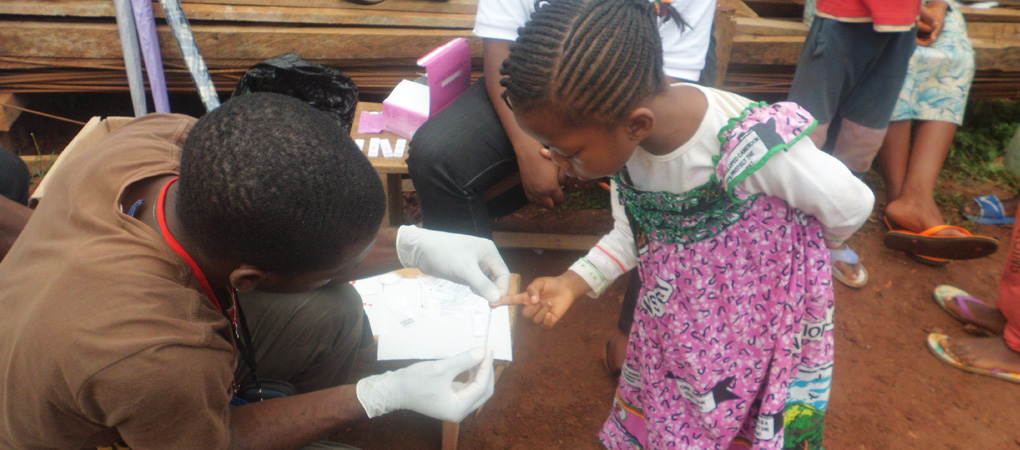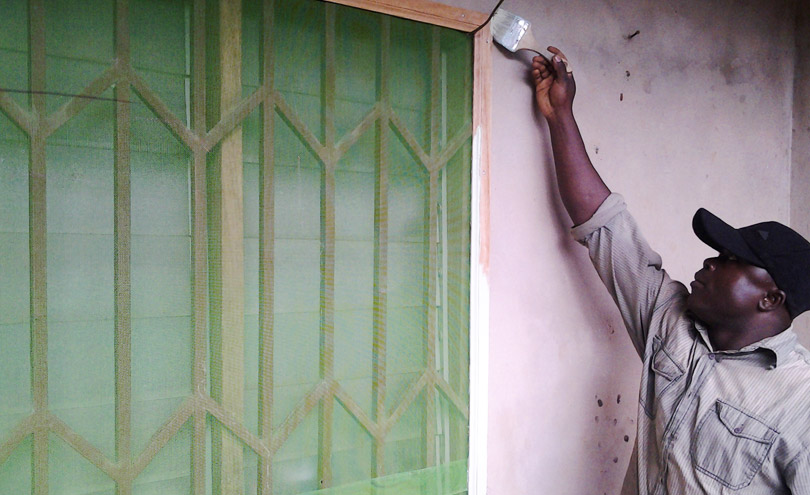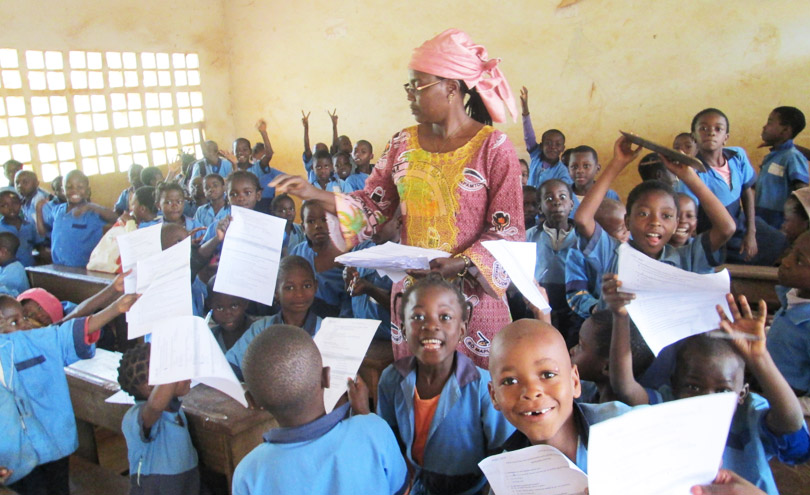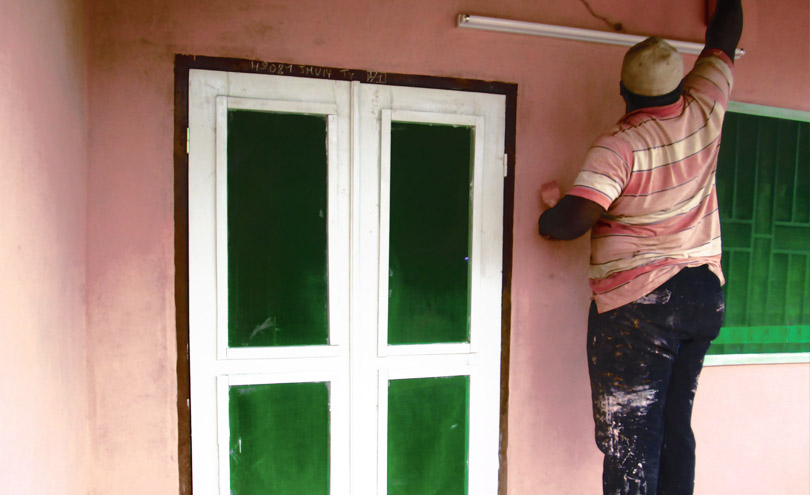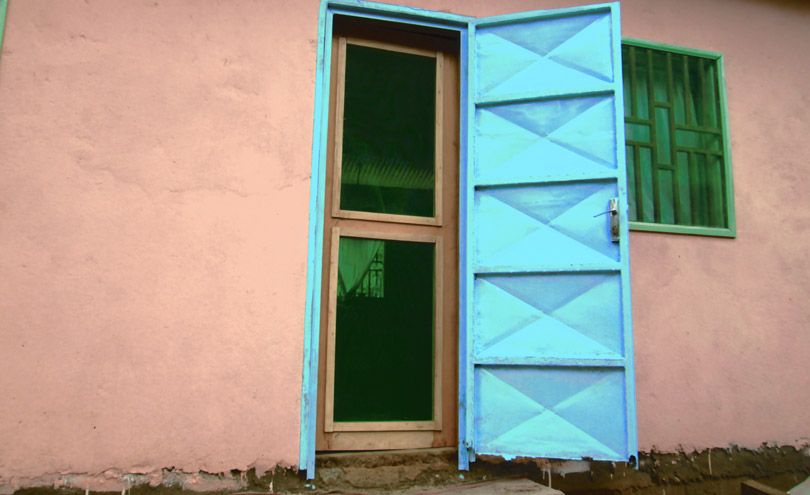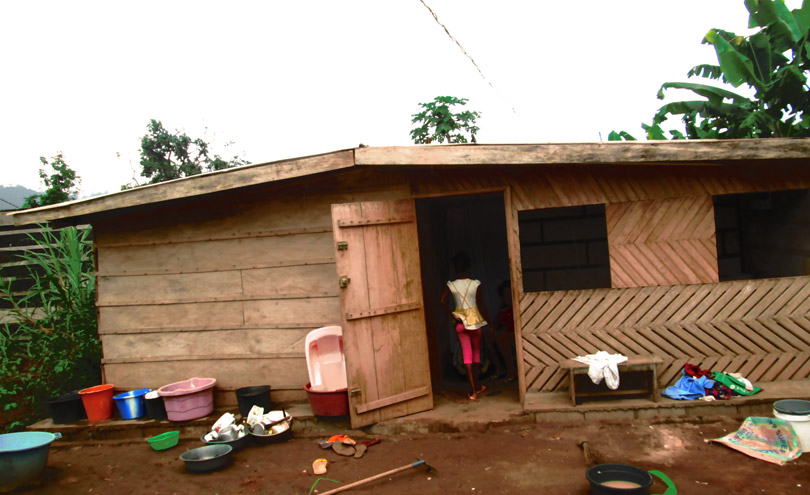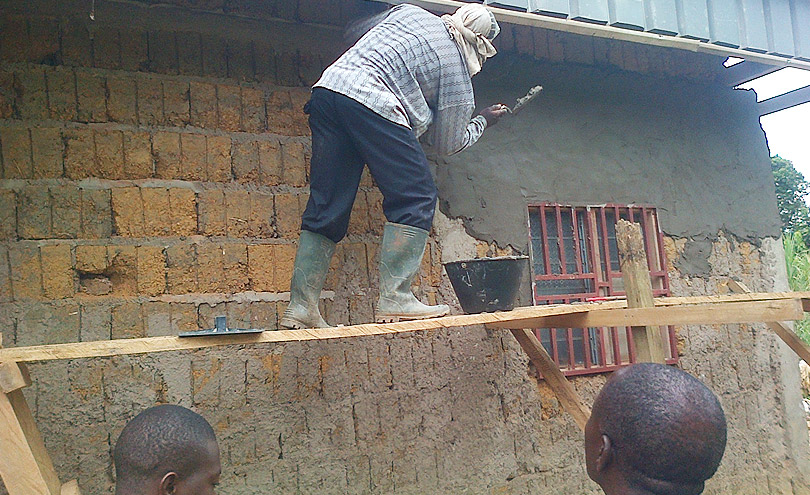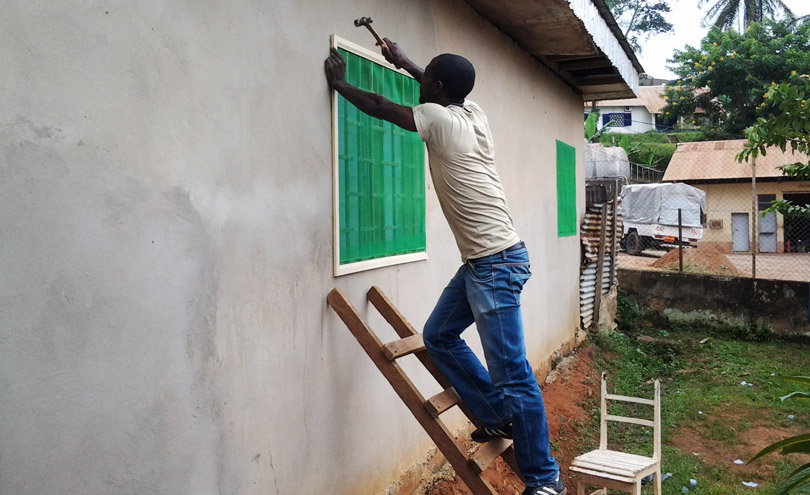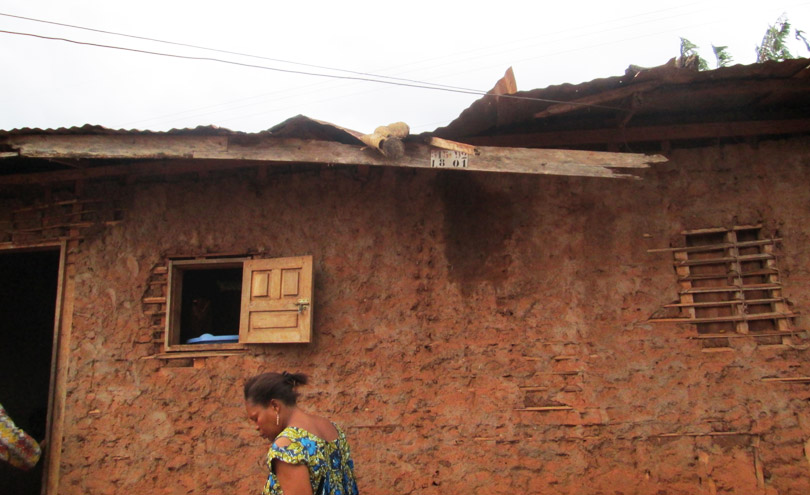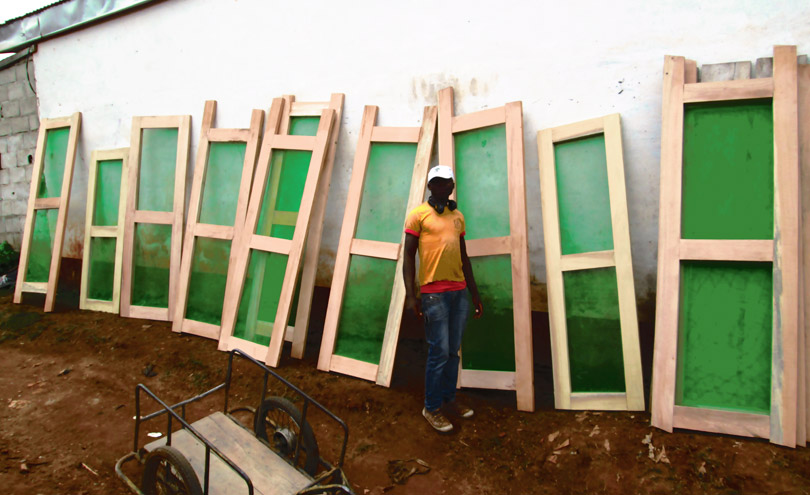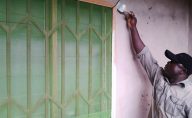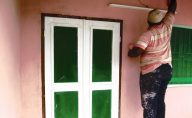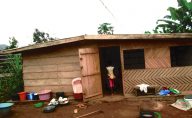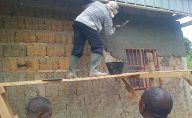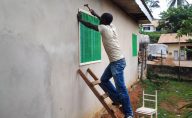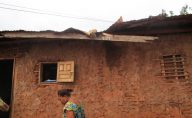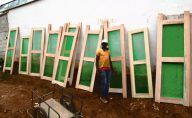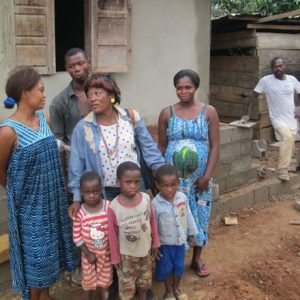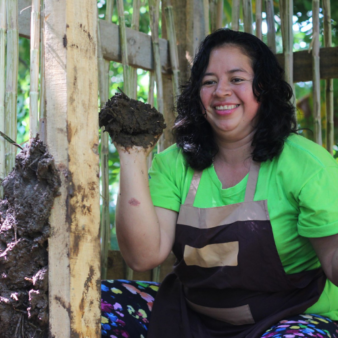Project Description
The project seeks to reduce the incidence of malaria by implementing home improvements that reduce the number of mosquitos entering people’s homes. The project is based in Minkoameyos, one of the poorest informal settlements in Cameroon’s capital city Yaoundé where 80% of children were found to have the disease. There have been significant reductions in the incidence of malaria globally, but it is still the biggest killer of children under five in Cameroon. Resistance to antimalarial drugs is increasing alarmingly, which means that drugs can no longer be relied upon to tackle the disease alone. Research has shown that home improvements can significantly reduce the incidence of malaria. A study in 15 Sub-Saharan African countries found that malaria infection rates of 70.6% in traditional housing were reduced to 45.5% for modernised housing. The study found that the home is the most important place for tackling the disease, because 80% of mosquito bites are experienced indoors at night.
The project focused on a number of measures designed to prevent mosquitoes getting into people’s homes. These included:
- Fitting screens on doors and windows.
- Closing eaves and gaps in walls and roofs.
- Ensuring adequate ventilation.
- Improving sewage and drainage to eliminate mosquito breeding sites.
These improvements were fitted to 219 homes (that housed a total of 1,314 residents). Households in the immediate vicinity of homes where work was completed also benefited indirectly from a reduction in mosquito breeding sites as a result of the interventions. ARCHIVE Global worked specifically with Cameroon’s National Malaria Control Program and the Ministry of Public Health to ensure the government was supportive of the project before work began.
The project also raised awareness of malaria prevention through educating community members on disease prevention and the links between housing and health. Five thousand community members underwent training on disease prevention. A radio campaign on how to keep mosquitos out of homes reached around 55,000 listeners.
This project was implemented by ARCHIVE Global in partnership with Cameroon Coalition against Malaria, the National Malaria Control Programme and the University of Yaoundé. ARCHIVE Global is an international non-governmental organisation based in New York. They aim to create awareness about the link between poor housing and health issues by carrying out research which influences their practical housing adaptations to improve health. The organisation has a core team of three employees and numerous volunteers. It collaborates with local organisations across the world. ARCHIVE global has active projects in Swaziland, India and Bangladesh. The project in Delhi, India implements sanitation units to reduce water borne and bacterial illnesses such as diarrhoea. In Bangladesh they are building concrete floors to decrease the spread of parasitic pathogens which cause illnesses such as typhoid and hepatitis A and E. They have plans for future projects in Bolivia and Ethiopia. All their projects use both local expertise and resources.
The project was completed in February 2016.
Aims and Objectives
The project’s main objective was to reduce cases of malaria in the most vulnerable households by making simple low cost improvements. A further aim was to find out more about these improvements and encourage their uptake in the wider community.
Participating households were chosen based on their vulnerability to infection, and their willingness to be involved in the work. The risk criteria included having at least one child under the age of five, and more than two adults sleeping in the same room.
The aims of the project were to:
- Reduce the incidence of malaria amongst the households in the project.
- Research which housing interventions were most effective in reducing the entry of mosquitos into homes.
- Train residents to carry out interventions which stop mosquitos entering homes.
- Raise community awareness about the different types of malaria prevention and the link between better housing and reduced risk of malaria.
Context
According to the World Health Organisation there were 214 million cases and over 50 million deaths caused by malaria globally in 2015. Although there have been significant reductions in recent years, Sub-Saharan Africa continues to carry a disproportionately high share of the global malaria burden. The disease remains the biggest killer of children under five in Africa. In Cameroon it is responsible for half of all deaths of children under five. Traditionally, malaria has been prevalent in rural areas in Cameroon, but, as cities grow this is changing and the scale and impact of urban malaria is increasing.
Malaria is a disease caused by a parasite that has half its life cycle in people and the other half in mosquitos. Mosquitoes that transmit malaria tend to fall into two categories: indoor feeding and outdoor feeding. Indoor-feeding mosquitoes target people in their homes when they are asleep. Over time these mosquitoes have developed behaviours to more efficiently feed on humans. Their behaviour has measurably changed in recent years as more people live in urban areas. For example these mosquitoes will fly upward when reaching a wall, while most other mosquitoes will fly sideways. Flying upward helps mosquitoes find openings such as windows, cracks around doors or open eaves. Outdoor-feeding mosquitoes are generally less effective and target humans less exclusively.
There was a United Nations Millennium Reduction Goal to halt the spread and reverse the incidence of malaria by 2015. This was successful with a 58% global reduction between 2000 and 2015. The reductions were achieved by preventing transmission and treating those who were infected. The World Health Organization encouraged indoor spraying of insecticides in homes, and increasing the use of insecticide-treated bed nets. Although these worked they also presented risks. Some insecticides are believed to be harmful to people, some may be carcinogenic. The widespread use of insecticides has promoted insecticide resistance amongst mosquitos. There has also been a significant increase in resistance to antimalarial drugs, particularly by the Plasmodium falciparum parasite, which causes the deadliest form of the malaria. This means that it is becoming increasingly difficult to reduce malaria further using traditional techniques. There is also evidence that these interventions have not been widely adopted in Cameroon with only 11% of children under five sleeping under mosquito nets and only 1% of these sleeping under insecticide treated nets.
Housing poverty is a big issue in Cameroon. According to the most recent Cameroon housing survey 12.3% of urban households and 39.7% of rural households live on less than US$2 a day. Many vulnerable groups live in poor quality housing. In the country’s capital of Yaoundé, 85% of settlements are considered to be informal. Much of the housing does not comply with national building standards. There are no clear borders between people’s homes, and many do not own the right to the land where they live.
In Minkoameyos, where the project is focused, it was found in 2012 that a staggering 80% of children had malaria demonstrating the urgent need for prevention.
Key Features
The project focused on easy and cheap interventions to ensure they could be replicated in the future without ongoing support from ARCHIVE Global. Each house was surveyed in order to identify the improvements that were needed. A member of each targeted household learned how to mosquito-proof homes. After training, residents were able to carry out some of the improvements themselves, and share this knowledge with their community.
Wider community training included health-related workshops and technical training in health and housing. Five thousand residents received training which showed them how to recognise signs of malaria and how to prevent it through housing improvements. The project reached a further 55,000 people in the wider community through information on malaria reduction in local radio broadcasts. These gave information and advice that sought to raise awareness of malaria and offered people advice on reducing exposure and preventing mosquitos from breeding.
As part of the project ARCHIVE Global published guidelines about how to achieve malaria control through home improvements. This has been distributed to the local community, and has been used in transferring the techniques to other projects.
What impact has it had?
Direct impact is difficult to measure because of the short duration of the project. There was incomplete information about the level of malaria infection before the project started. The project estimates that if home improvements and reduction in mosquito-breeding sites are regularly maintained, a significant reduction in malaria will be measurable in ten years.
The project evaluation has however demonstrated that numbers of mosquitos in people’s homes was reduced by 50%, which significantly reduces the risk of people being infected.
The project’s work with local universities, the Ministry of Public Health and the National Malaria Control Programme means that there is widespread support for and awareness of the project which will help positive impact to continue.
At an international level, governments in Namibia, Swaziland and Gabon and the Clinton Health Access Initiative have all learned from this project when developing their own mosquito-proofing interventions.
How is it funded?
The total cost of the project was slightly under US$500,000. The UBS Optimus Foundation, (a Swiss grant-making foundation dedicated to improving the lives of children worldwide) provided grant funding of US$165,000 per year (2013 – 2016). A grant for construction materials was received from the SELAVIP Foundation which funds housing projects supporting the poorest of the poor around the world.
Why is it innovative?
The project approach combines research into health with practical interventions in housing. Its promotion of housing as a prevention method for dangerous but avoidable diseases is innovative. It is rare to see a project where housing interventions are led by health experts. It demonstrates the potential for other sectors to collaborate on shared problems.
As more and more mosquitos are becoming resistant to pesticides and insecticides, it is becoming increasingly important to find alternative ways to control malaria. Additionally using chemicals poses significant risks to human health from skin irritation and nausea to cancer. This approach offers a solution which avoids the use of chemicals through making changes in the built environment.
The housing improvements used in the approach also last longer compared to other interventions for example spraying walls with chemicals which has to be repeated yearly.
The use of basic techniques and local materials meant that local people could carry out the work themselves and can now more easily maintain their adaptations. Empowering local people to prevent malaria themselves creates lasting impact.
What is the environmental impact?
The projects building interventions tried to use local materials to maximise environmental sustainability. However, some materials were not manufactured locally and had to be imported. Lumber used for doors and window frames was made of pine which is native to the area. Pine is a fast-growing tree which is more sustainable than using hardwood trees. Locally produced compact mud bricks were also used which have low embodied energy (embodied energy is the sum of all the energy required to extract, produce, transport and build any goods or services). The project also used passive design strategies (‘Passive design’ takes advantage of the climate to maintain a comfortable temperature in the home).
Chemical interventions which are most common in malarial prevention are harmful to the environment, including to people and animals. This project used chemical free interventions to break the chain of mosquito feeding, disrupting their reproduction and development. This not only reduces the number of mosquito breeding sites, but also improves the environment in homes.
Is it financially sustainable?
As the project had a defined timescale for grant use there were no additional plans made to achieve longer term financial sustainability after the grant was spent. However, the training and expertise given to residents through the project allowed certain residents to develop enterprises around mosquito-proofing homes. This demonstrates how the approach could potentially create economic opportunities.
ARCHIVE Global has produced evidence that the cost of home improvements can be reduced significantly if they are carried out at scale. Typical interventions cost US$300 to US$500 per unit. Subsequent projects modelled on what was achieved in Cameroon it has been possible to reduce costs of household interventions from US$300 – US$500 to US$30 – US$55 per home making future replications of the project more economic.
Even with reduced costs people on very low incomes would be unable to afford materials for interventions. So, to be repeated, the project would require further grant funding.
What is the social impact?
The project helped communities to understand how to protect themselves from mosquitos entering their home. Following the projects outreach and training community members have been able to fit their own mosquito screens without the support of ARCHIVE Global. This training did not only allow residents to become aware of what interventions were needed, but also gave them the practical building skills to achieve these interventions.
The project allowed communities to come together to work towards a common goal. As well as working on their own homes, residents worked with neighbours and shared their knowledge with other community members. By working with the poorest of the poor, the project reduces social inequalities by reducing the health risks faced by vulnerable groups. The housing improvements carried out by ARCHIVE Global led to a fall in mosquito numbers by 50%, reducing the risk of being bitten.
The wider activities and awareness raising led to significant increases in knowledge within the community. Far more people were trained to understand that blood tests could help to diagnose malaria and that screening windows and doors could help to prevent it.
Barriers
The project faced a number of barriers which were:
- Coordination: working with multiple other organisations in different contexts was challenging this was overcome as relationships developed.
- Higher than expected costs: This meant that they could not implement as many educational programmes in primary schools as they wanted. But, they partnered with a technical school as an alternative.
- Data Collection: the research team struggled to collect information which resulted in delays. It also meant they could not focus on collecting evidence on malaria prevention for children under five.
Lessons Learned
The project learned that it is best to focus on local building practices (for example their use of compact earth blocks) rather than importing international practices. For example, whilst closing eaves is recommended to reduce mosquitos entering homes, in practice the project found that issues developed in some homes around the lack of air circulation and discomfort for residents. This was due to less light, airflow and temperature increases. This led them to change their approach to use fibreglass and plastic for mosquito-proofing homes to prevent overheating and rust.
Evaluation
A final evaluation was conducted by the University of Yaoundé and the Cameroon Coalition Against Malaria to assess the project’s impact including research on biting rates. There has not yet been any evaluation of which specific design interventions worked best and ARCHIVE Global is currently working on a way of carrying out this further evaluation. The initial evaluation by the University of Yaoundé and the Cameroon Coalition Against Malaria is being developed into a peer reviewed research paper.
During the project, four household surveys were carried out to see how resident’s views on malaria prevention were changing. Between the first and the fourth survey there was a 300% increase in the number of individuals identifying blood tests as a way of diagnosing malaria. Between the first and the second survey there was a 400% increase in the numbers of residents stating ‘screening windows and doors’ as an effective intervention.
Recognition
The project was included in an article by UK national media titled ‘Archive Global: fighting disease with low-tech, low-cost design’, which discussed more generally ARCHIVE Global’s mission and approach. The project was also discussed at the steering committee for Roll Back Malaria in 2015. Roll Back Malaria is a global platform for coordinated action around malaria.
Transfer
The projects simple building interventions can be easily utilised to act as prevention method for malaria and other vector-borne diseases in other locations. The guidelines on housing interventions mean that any organisation can launch and scale a similar project.
Working with the Clinton Health Access Initiative, ARCHIVE Global has begun transfer through the provision of technical assistance in traditional, modern and mixed structure homes in Namibia and Swaziland.
In Namibia, ARCHIVE provided our technical services pro bono. They conducted in-country scoping and technical/public health training trips and created a comprehensive toolkit for community health workers, technicians, and homeowners. Additionally, they advised Clinton Health Access Initiative on the design of the interventions. ARCHIVE contributed several hundred hours and additional resources since ARCHIVE views these collaborations as valuable opportunities to promote the use of the built environment as a life-saving vector control tool.
In Swaziland, Clinton Health Access Initiative offered ARCHIVE a nominal fee for their services. By the end of 2017, ARCHIVE will have conducted several trips to the country and have trained local ministry officials, builders and contractors, and supported the implementation of the country’s first project utilising home improvements as a vector control against malaria.
ARCHIVE global is also currently assisting the Gabonese Government in conducting large scale mosquito-proof housing of over a thousand homes in Gabon. It is hoped this will begin to be rolled out in the second half of 2017.
Interventions can be used for other vector-borne diseases and ARCHIVE Global is currently working on transferring the project to adapt homes against Chagas (a disease caused by parasites and transmitted mostly by insects) in Bolivia.
Penn State University and in2care (a Dutch company specialising in insect control products) are working on mosquito proofing in Tanzania after learning from the work of ARCHIVE Global.
A barrier to further transfer is the fact that the interventions will not necessary work in all locations due to differing environments. Therefore, it is important that additional transfer is flexible and adaptable to different contexts to ensure different cultural, environmental and structural needs are considered.

